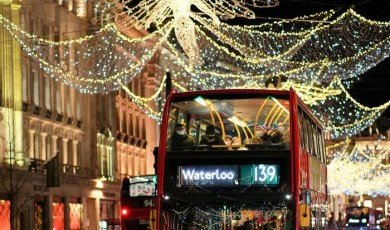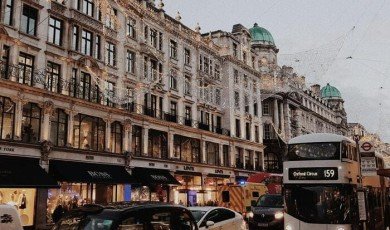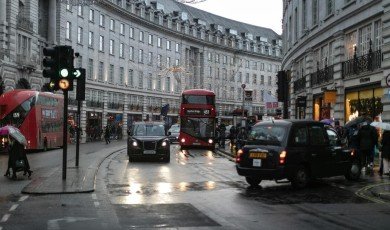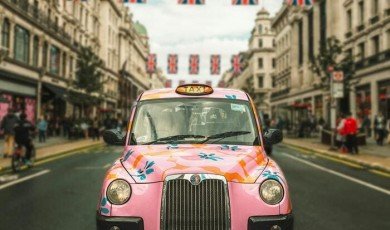London’s iconic West End has always been a playground for shoppers, culture lovers, and food enthusiasts, but navigating its busy avenues has never been more intelligent than it is today. Artificial intelligence is quietly reshaping how visitors explore major retail districts, turning every stroll, purchase, and photo into a more personalized and efficient experience. From real-time translation and tailored shopping suggestions to dynamic crowd insights and digital concierges, AI tools now act as invisible travel companions that help visitors get more out of every step.
As smart itineraries and data-driven recommendations become the norm, choosing the top AI tools can make the difference between an ordinary shopping trip and a seamless urban adventure filled with hidden gems, exclusive offers, and stress-free navigation.
1. Smart Itinerary Planners for Hyper-Personalized City Walks
AI itinerary planners are transforming how visitors design their day in central London. Instead of relying on static guidebooks or generic blog posts, travelers can input preferences—such as luxury fashion, local designers, architecture, cafés, or theatre—and receive step-by-step walking routes tailored to their style, budget, and available time.
These tools analyze opening hours, live traffic, public transport updates, and even weather data to recommend the best sequence of stops. They minimize backtracking, suggest the most photogenic detours, and can adjust the route in real time if plans change. For visitors pressed for time, AI itineraries ensure every hour is strategically spent, from flagship stores to tucked-away boutiques and galleries.
2. AI-Powered Map Apps That Think Like a Local
Traditional mapping apps are useful, but AI-enhanced navigation takes things further by acting more like a savvy local guide than a static GPS. These platforms learn user behavior over time and factor in preferences for quieter side streets, step-free access, or more scenic routes past landmarks and public art.
Many advanced map services also incorporate live crowd-density data, guiding travelers along less congested paths during peak shopping hours. Integrated recommendations pop up as you move—suggesting nearby bookstores, design shops, or cafés that match your interests, all informed by reviews, check-ins, and contextual data. The result is a smoother and more curated walking experience through busy retail zones.
3. Real-Time Translation and Multilingual Assistants
For international visitors, language is no longer a barrier to enjoying premium retail districts. AI translation apps provide instant voice and text translation for dozens of languages, making it easier to understand store signage, menus, promotional materials, and even historical plaques.
Modern translation tools increasingly use contextual AI to understand nuance—improving accuracy for fashion terms, product descriptions, or cultural references. Some concierge and messaging services in shops or hotels now integrate these translators directly, allowing staff and guests to communicate smoothly via chat or voice notes. This frictionless communication helps travelers feel more confident asking for tailoring options, size conversions, or special services.
4. Personalized Shopping Assistants in Your Pocket
AI shopping companions run on smartphones or inside retailer apps to curate items tailored to each visitor. By analyzing preferences, browsing history, and even visual cues from photos, these assistants can highlight collections that align with a traveler’s style, whether they are seeking heritage brands, sustainable labels, or limited-edition pieces.
Some tools scan barcodes or tags to surface rich product data instantly—materials, origin, care instructions, availability in other sizes or colors, and similar alternatives located in nearby stores. Others offer dynamic price alerts and comparison suggestions across different outlets. Instead of aimlessly wandering from window to window, travelers are empowered to shop with focus and clarity.
5. Visual Search and Augmented Reality Storefronts
Visual search is one of the most exciting AI-driven technologies for style-savvy visitors. Travelers can snap a photo of an outfit, handbag, or piece of décor they see on the street or in a window and use AI tools to find similar products in local shops. This bridges the gap between inspiration and purchase by turning real-world sightings into instantly shoppable suggestions.
Augmented reality (AR) layers make the experience more immersive. Pointing a phone at a façade can reveal virtual signs, promotions, or information about what lies inside. AR mirrors and try-on stations in participating stores allow visitors to experiment with looks, colors, and sizes without changing rooms, while AI analyzes body shape and fit preferences to refine suggestions.
6. Crowd-Insight Platforms for Timing Your Visit
Nothing disrupts a pleasant shopping trip more quickly than unexpected congestion. AI crowd-analysis platforms collect anonymized data from mobile devices, public cameras, and transport feeds to estimate how busy specific areas and stores will be at different times of day or on different days of the week.
Travelers can use these insights to choose quieter hours for leisurely browsing, schedule coffee breaks away from peak times, or reserve restaurants before they fill up. Some tools integrate directly with itinerary planners and mapping apps, automatically rerouting visitors around bottlenecks or suggesting alternative streets with similar ambiance but fewer people.
7. AI-Enhanced Loyalty, Offers, and Cashback Services
AI doesn’t just optimize movement; it also boosts value. Intelligent loyalty platforms analyze purchasing behavior, preferred brands, and visit frequency to deliver highly targeted offers. Instead of generic coupons, travelers receive suggestions for discounts or events that genuinely match their interests.
Advanced cashback and deal-finding tools monitor transactions in real time and apply rewards automatically at participating retailers. They can recommend where to make a purchase to maximize points or savings, and they often highlight exclusive experiences—such as private shopping appointments or in-store workshops—that might otherwise go unnoticed.
8. Intelligent Dining Discovery for Every Taste
Food is central to any memorable day out, and AI recommendation engines are making dining choices more precise and less stressful. By blending user reviews, menu data, dietary filters, and location information, these tools suggest everything from quick coffee stops to fine dining options within easy walking distance.
Travelers can set preferences for cuisine, budget, noise level, and dietary requirements such as vegetarian, halal, or gluten-free. AI then curates suggestions that fit those parameters, factoring in real-time availability and estimated walking times. Many tools link directly to reservation systems, allowing visitors to secure a table with a few taps and keep their day running on schedule.
9. Intelligent Photo Management and Memory Curation
The modern visitor leaves with hundreds of photos, and AI helps turn that digital clutter into a curated story. Smart gallery apps recognize landmarks, storefronts, and even branded interiors, automatically grouping images from specific streets and districts into themed albums.
These tools can generate highlight reels, suggest the best shots based on composition and clarity, and create shareable stories ready for social media. Combined with location history and timestamps, they reconstruct a detailed narrative of the day, preserving not only what travelers saw and bought but also how they moved through the city and what caught their eye along the way.
Conclusion: Turning a Day Out into a Data-Driven Experience
AI is reshaping how people interact with world-famous retail and cultural avenues, turning once-chaotic shopping trips into intelligently orchestrated experiences. From navigation and translation to personalized shopping, dining, and crowd management, every stage of the journey is becoming smarter and more responsive to individual needs.
Travelers who embrace these technologies gain clearer routes, better deals, and more meaningful discoveries, without sacrificing spontaneity. As AI systems become ever more sophisticated and interconnected, the line between digital guidance and real-world exploration will continue to blur—empowering visitors to see familiar streets with entirely new eyes.








